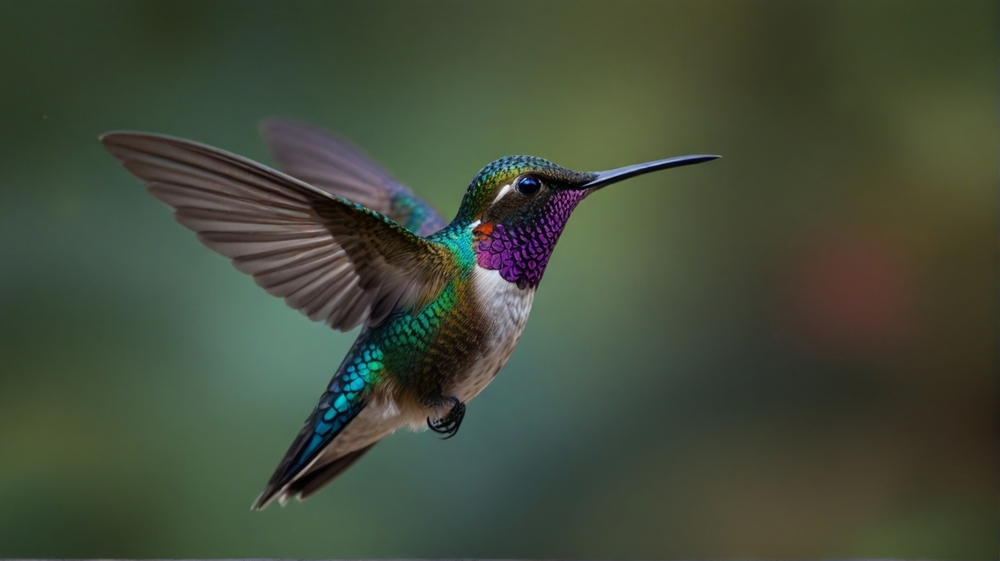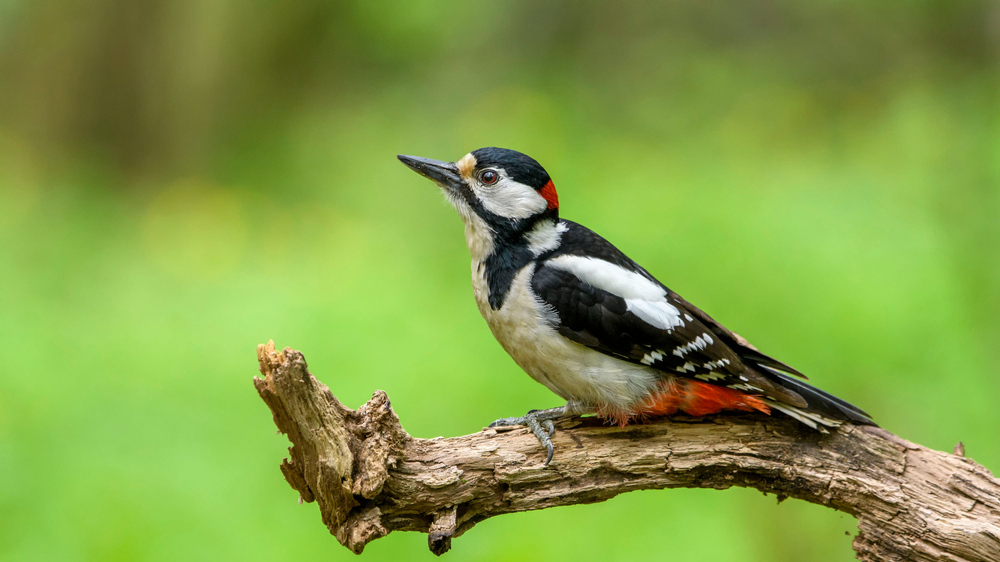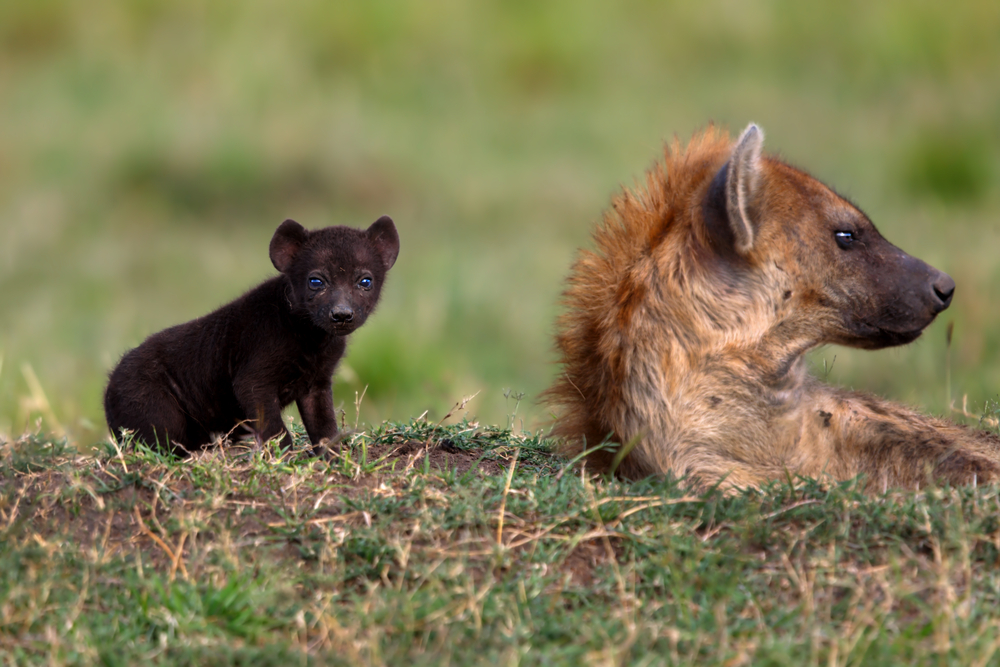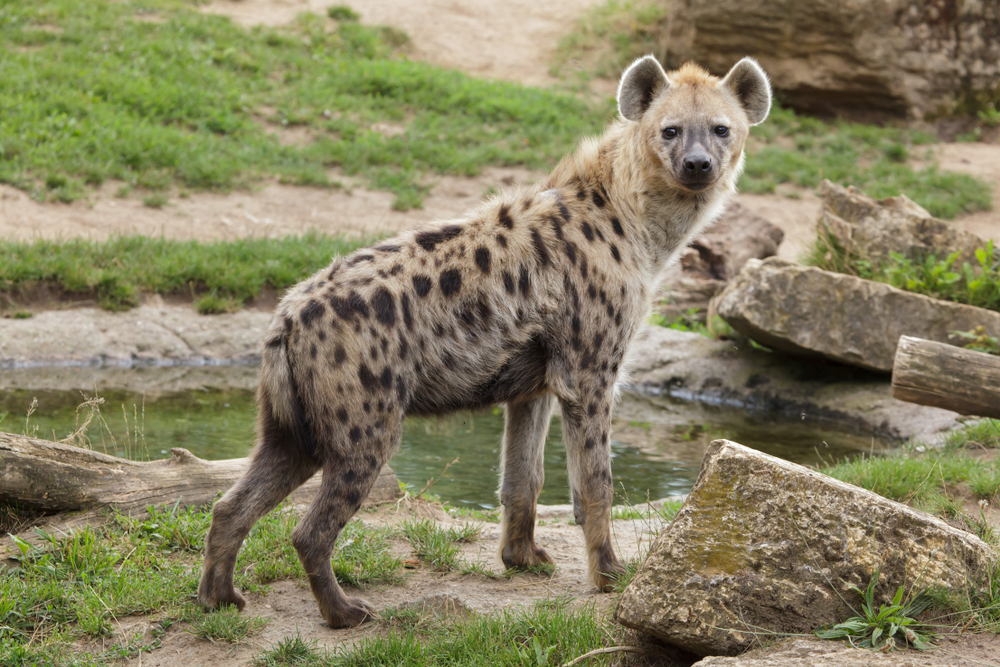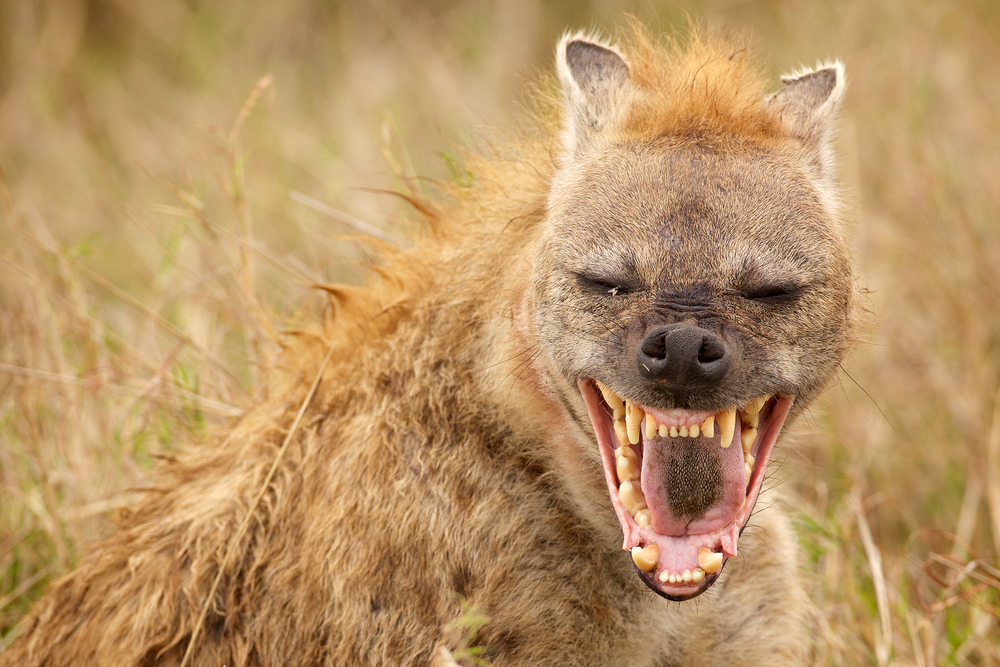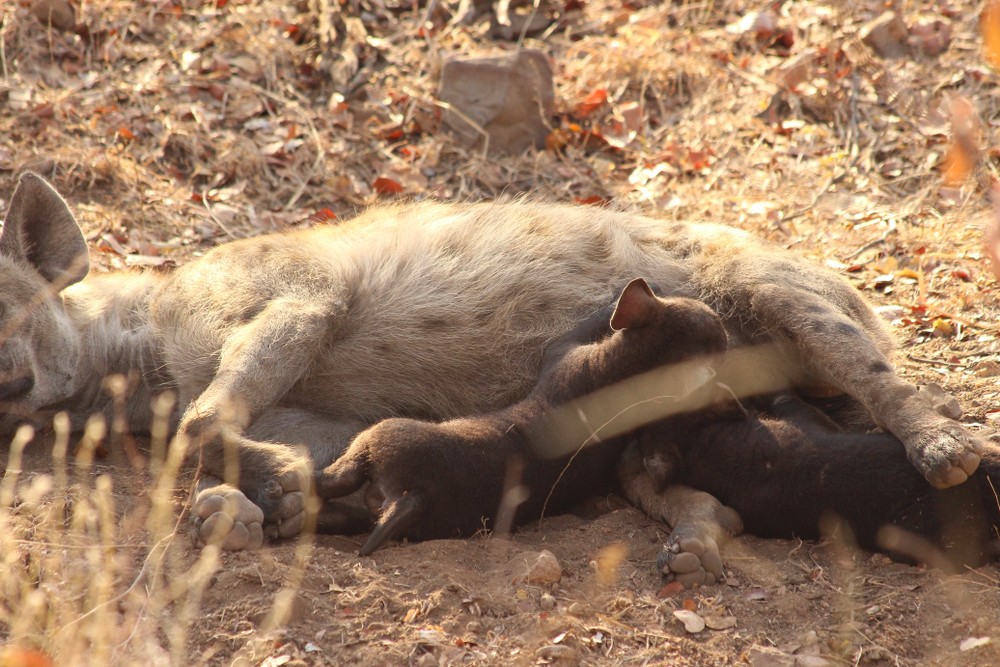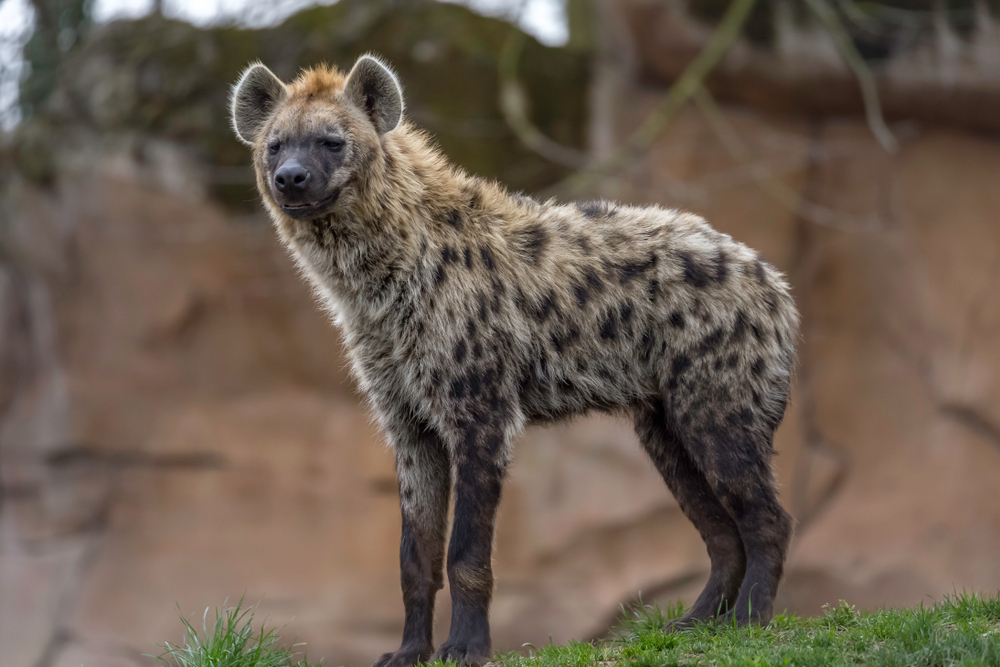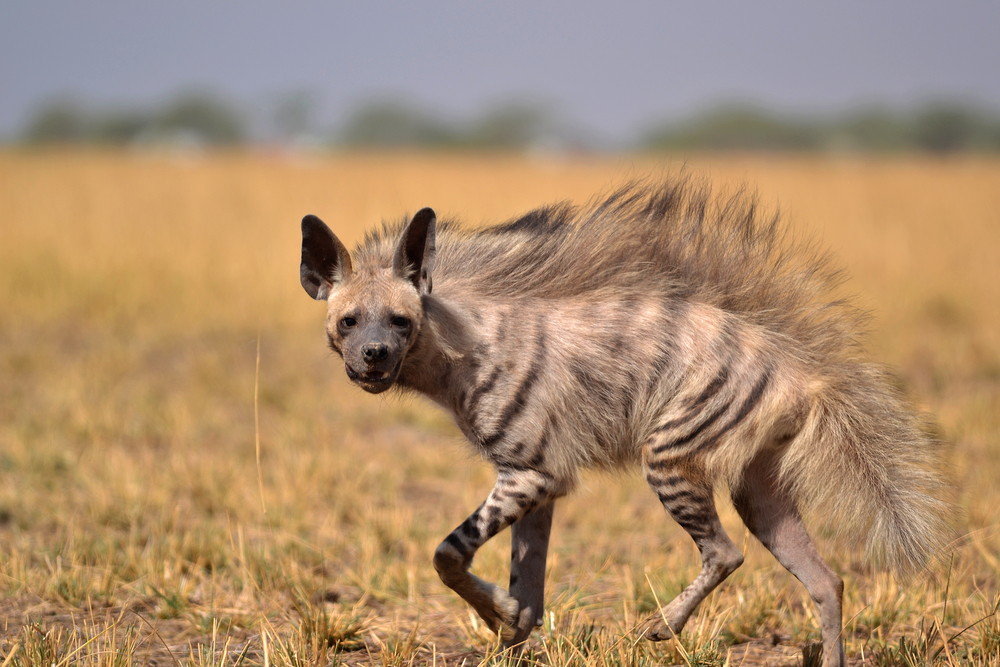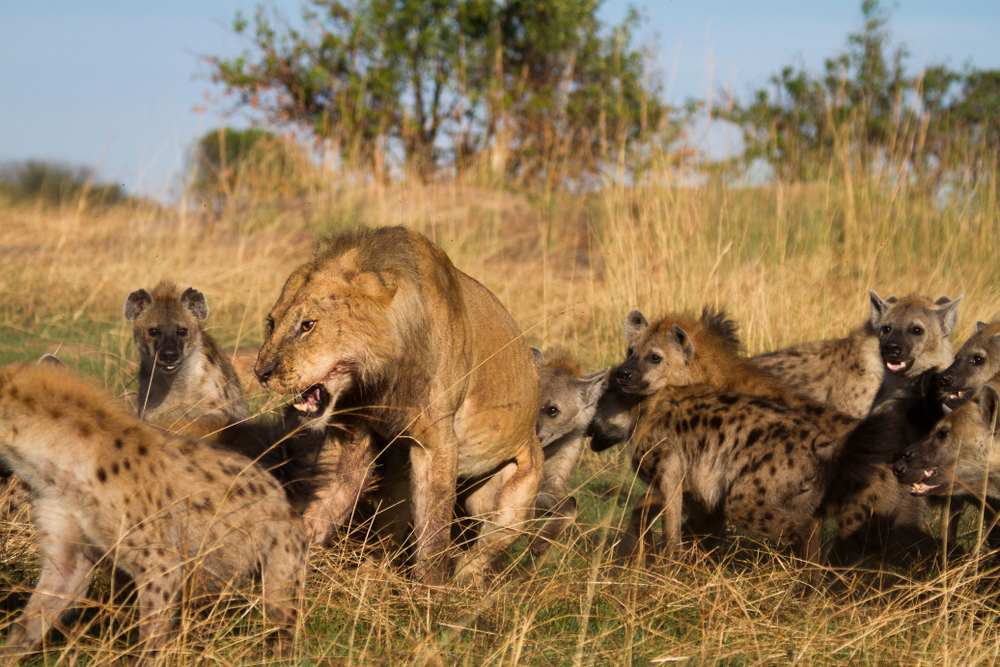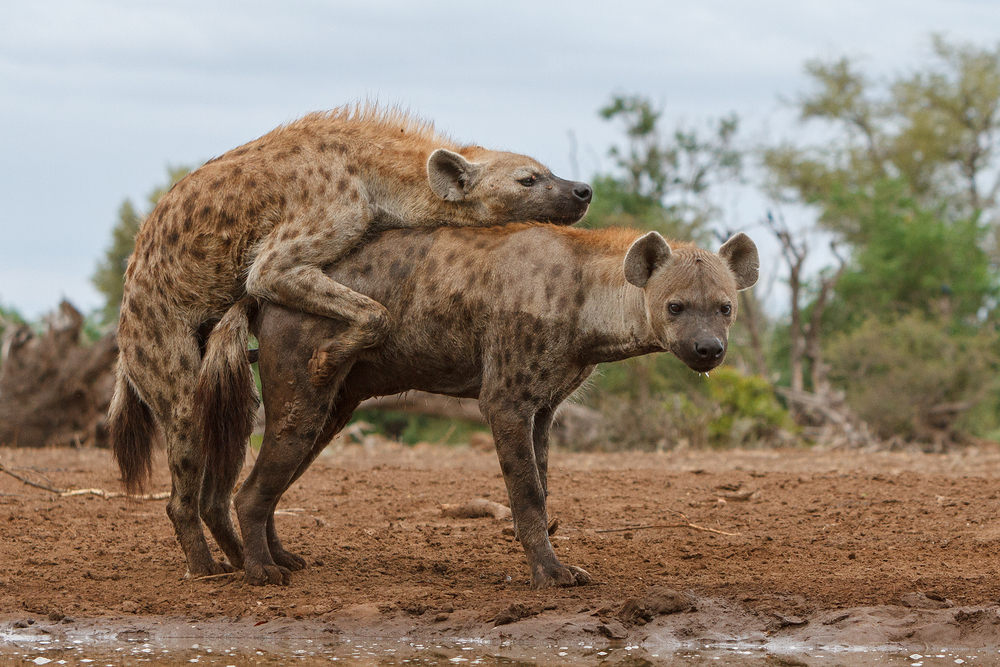Hyenas and dogs may look superficially similar, but they are quite different and belong to separate families in the animal kingdom. Here are some key differences:
- Taxonomic Family: Hyenas belong to the family Hyaenidae, whereas dogs are part of the family Canidae. This means they are not closely related; their similar appearances are due to convergent evolution, where unrelated species evolve similar traits.
- Behavior and Social Structure: While both hyenas and canids (the family that includes dogs, wolves, and foxes) are social animals, hyenas, particularly the spotted hyena, have a matriarchal social system which is unusual among mammalian species. Canids typically have a more male-dominated or egalitarian social structure.
- Vocalizations: Hyenas are known for their distinctive range of vocalizations, including whoops, groans, and the characteristic “laugh,” which are used for communication. Canids also communicate through vocalizations, but their sounds typically include barking, howling, and whining.
- Reproductive Anatomy: Female spotted hyenas have a unique reproductive anatomy with a pseudo-penis, which is not found in any canid species.
- Diet and Hunting: While both hyenas and canids are carnivorous, hyenas have much stronger jaws and are capable of cracking bones to get to the marrow, which is a significant part of their diet. Canids do not typically consume bones in the same way.
- Locomotion: Hyenas have a distinct gait due to their front legs being longer than their back legs, giving them a slightly loping stride. Dogs have more balanced proportions that facilitate a variety of gaits from walking to running.
- Digestive System: Hyenas have a highly acidic digestive system that allows them to process and obtain nutrients from bones, which is something that dogs and other canids cannot do.
These differences reflect the distinct evolutionary paths these animals have taken and their adaptations to their respective ecological niches.


















